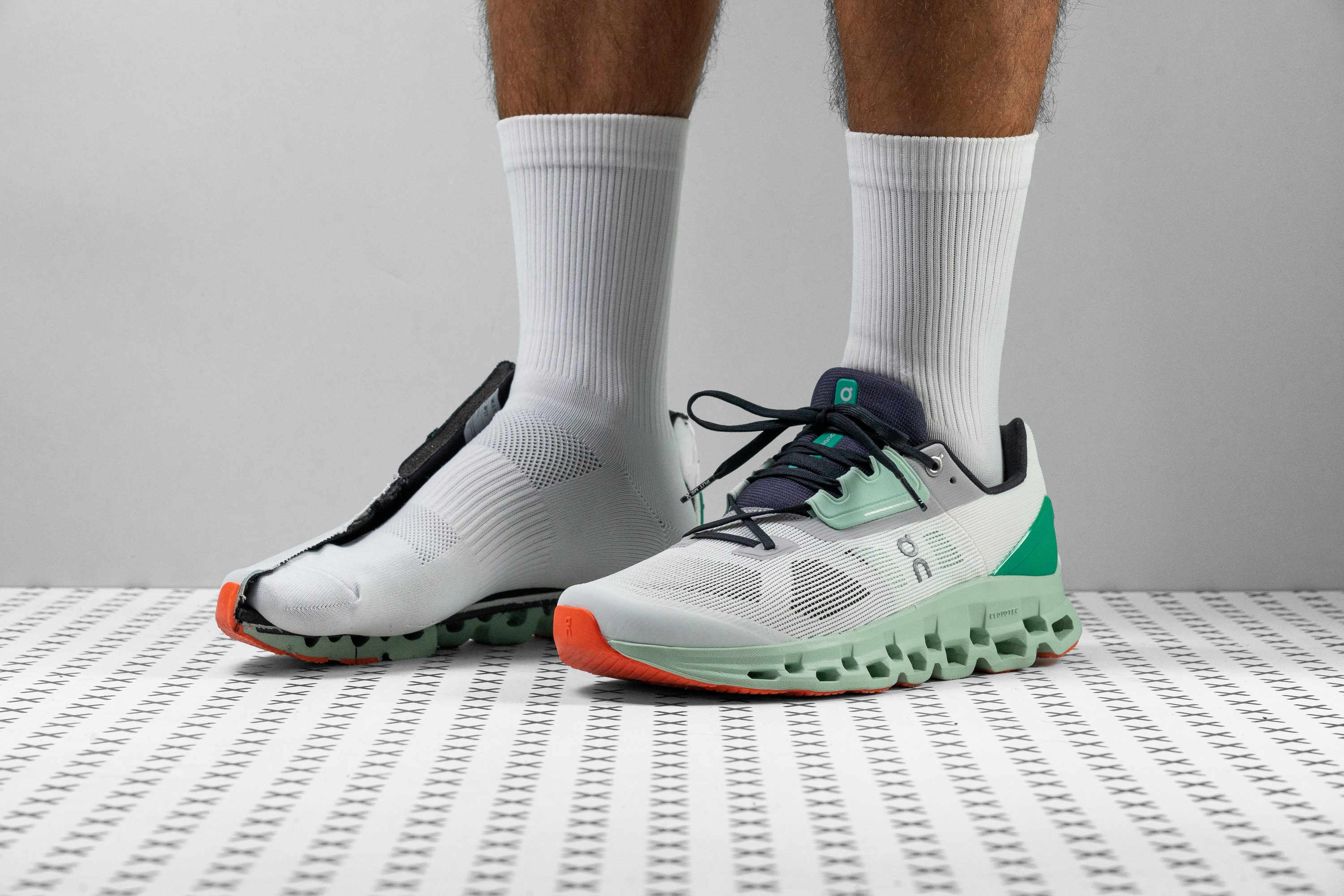Our verdict
Pros
- Super stable
- Top-notch build quality
- Versatile as a walking or gym shoe
- Bouncy midsole
- Excellent for winter conditions
- Plush upper and heel for comfort
- Unique ride
Cons
- High price point at $170
- Questionable outsole durability
- Could have better breathability
Audience verdict
- Top 12% in road running shoes
- Top 13% in On running shoes
Comparison
The most similar running shoes compared
+ + Add a shoe | |||||
|---|---|---|---|---|---|
| Audience score | 91 Superb! | 87 Great! | 83 Good! | 90 Superb! | |
| Price | £160 | £110 | £160 | £170 | |
| Pace | Daily running | Daily running | Daily running | Daily running | |
| Shock absorption | - | Moderate | Low | Moderate | |
| Energy return | - | High | Low | Moderate | |
| Traction | - | - | Moderate | High | |
| Arch support | Stability | Stability | Stability | Neutral | |
| Weight lab Weight brand | 10.3 oz / 293g 11.1 oz / 315g | 10.3 oz / 293g 10.5 oz / 297g | 11.6 oz / 329g 11.3 oz / 320g | 10.4 oz / 296g 10.3 oz / 292g | |
| Drop lab Drop brand | 9.7 mm 8.0 mm | 9.8 mm 10.0 mm | 7.9 mm 10.0 mm | 9.1 mm 6.0 mm | |
| Strike pattern | HeelMid/forefoot | HeelMid/forefoot | Mid/forefoot | HeelMid/forefoot | |
| Size | True to size | True to size | True to size | True to size | |
| Midsole softness | Balanced | Firm | Balanced | Balanced | |
| Difference in midsole softness in cold | Small | Small | Normal | Normal | |
| Toebox durability | Bad | Decent | Good | Decent | |
| Heel padding durability | Bad | Good | Good | Good | |
| Outsole durability | Decent | Bad | Good | Good | |
| Breathability | Moderate | Warm | Moderate | Moderate | |
| Width / fit | Medium | Medium | Narrow | Wide | |
| Toebox width | Wide | Wide | Medium | Medium | |
| Stiffness | Stiff | Stiff | Moderate | Stiff | |
| Torsional rigidity | Moderate | Moderate | Stiff | Stiff | |
| Heel counter stiffness | Moderate | Moderate | Moderate | Flexible | |
| Heel lab Heel brand | 33.8 mm 28.0 mm | 32.9 mm 31.0 mm | 33.2 mm 31.0 mm | 35.3 mm 37.0 mm | |
| Forefoot lab Forefoot brand | 24.1 mm 20.0 mm | 23.1 mm 21.0 mm | 25.3 mm 21.0 mm | 26.2 mm 31.0 mm | |
| Widths available | Normal | Normal | Normal | Normal | |
| Orthotic friendly | ✓ | ✓ | ✓ | ✓ | |
| Season | All seasons | All seasons | All seasons | All seasons | |
| Removable insole | ✓ | ✓ | ✓ | ✓ | |
| Ranking | #65 Top 10% | #168 Top 46% | #247 Bottom 33% | #69 Top 19% | |
| Popularity | #331 Bottom 49% | #349 Bottom 5% | #158 Top 43% | #171 Top 47% |
Who should buy
We believe that the On Cloudstratus is an interesting choice for:
- Runners dealing with minor stability issues who are seeking a reliable shoe with firm cushioning.
- Loyal fans of the On brand looking for a daily training shoe suited for easy paces.
- Those who aren't budget-constrained and are willing to invest £170 in a versatile shoe with superior build quality.
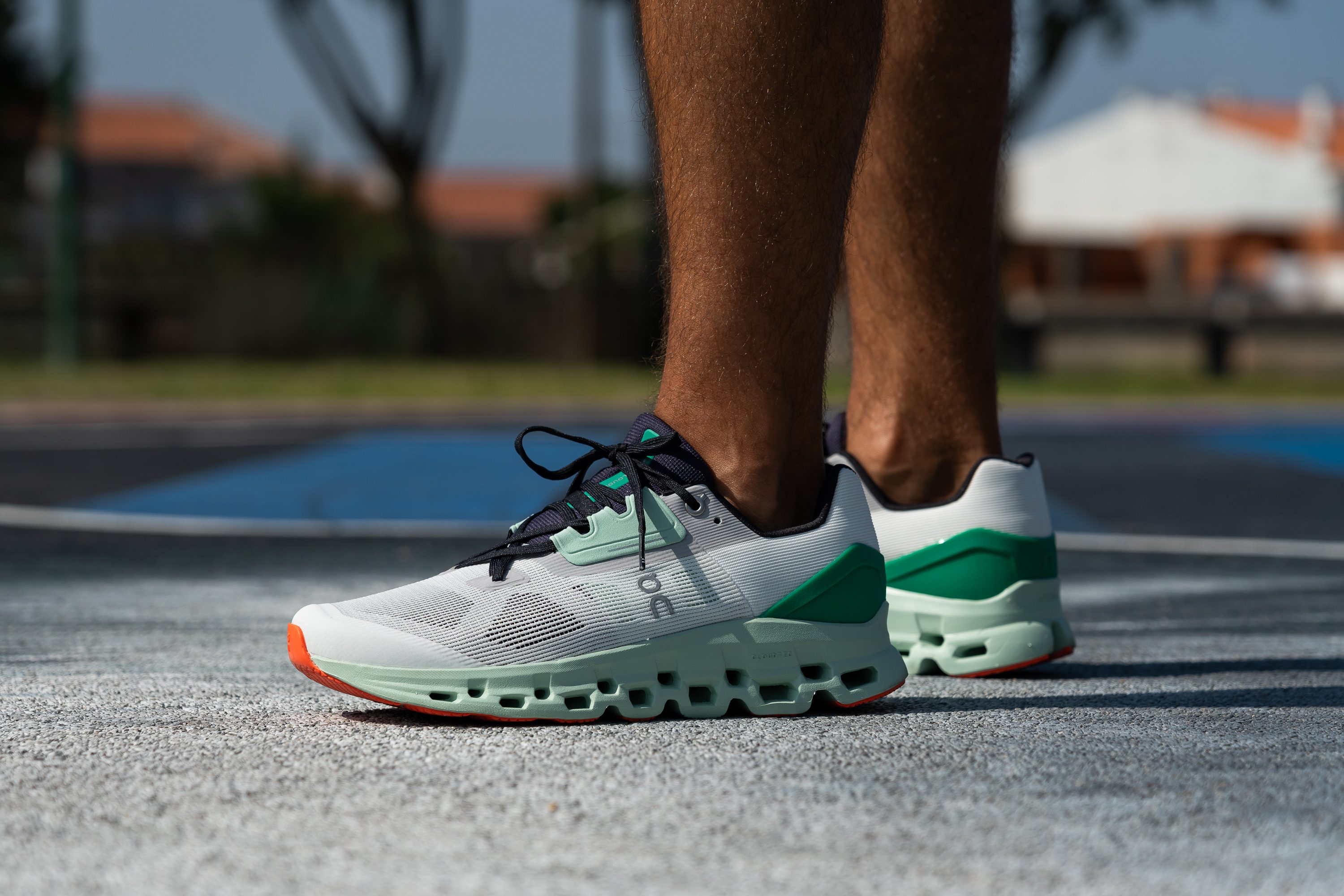
Who should NOT buy
If you're seeking a shoe with a plush midsole, you probably want to steer clear of this one. For a daily trainer offering both stability and a softer underfoot feel, you'd be better off considering options like the Saucony Tempus or the Brooks Glycerin GTS 20.
Also, we found that the Cloudstratus clearly falls short in terms of breathability, making it less than ideal for summer training in hot weather. If breathability is a high priority for you in a do-it-all shoe, our tests suggest the ASICS Novablast 3 would be a better choice. And if you want an On shoe that offers enough ventilation, we recommend checking out the Cloudswift 3.
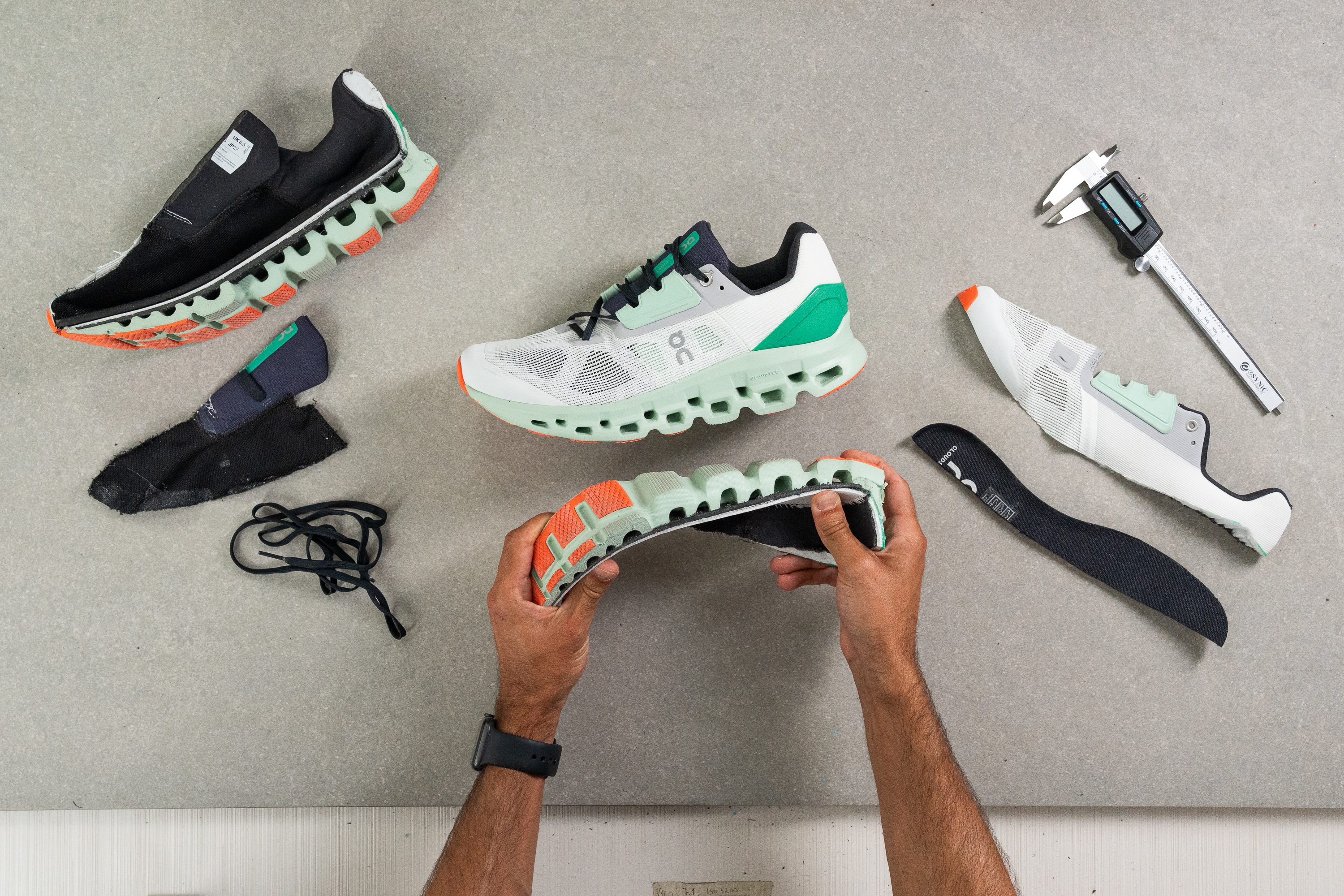
Cushioning
Heel stack
We clocked in a stack height of 33.8 mm at the heel, which aligns with the current average standards and accommodates heel strikers. There's no need for more in a versatile shoe like this, as that would only boost the weight.

| Cloudstratus | 33.8 mm |
| Average | 34.8 mm |
Forefoot stack
The same pattern continues to the forefoot (24.1 mm). It's as if On designed the Cloudstratus to be as average as possible!
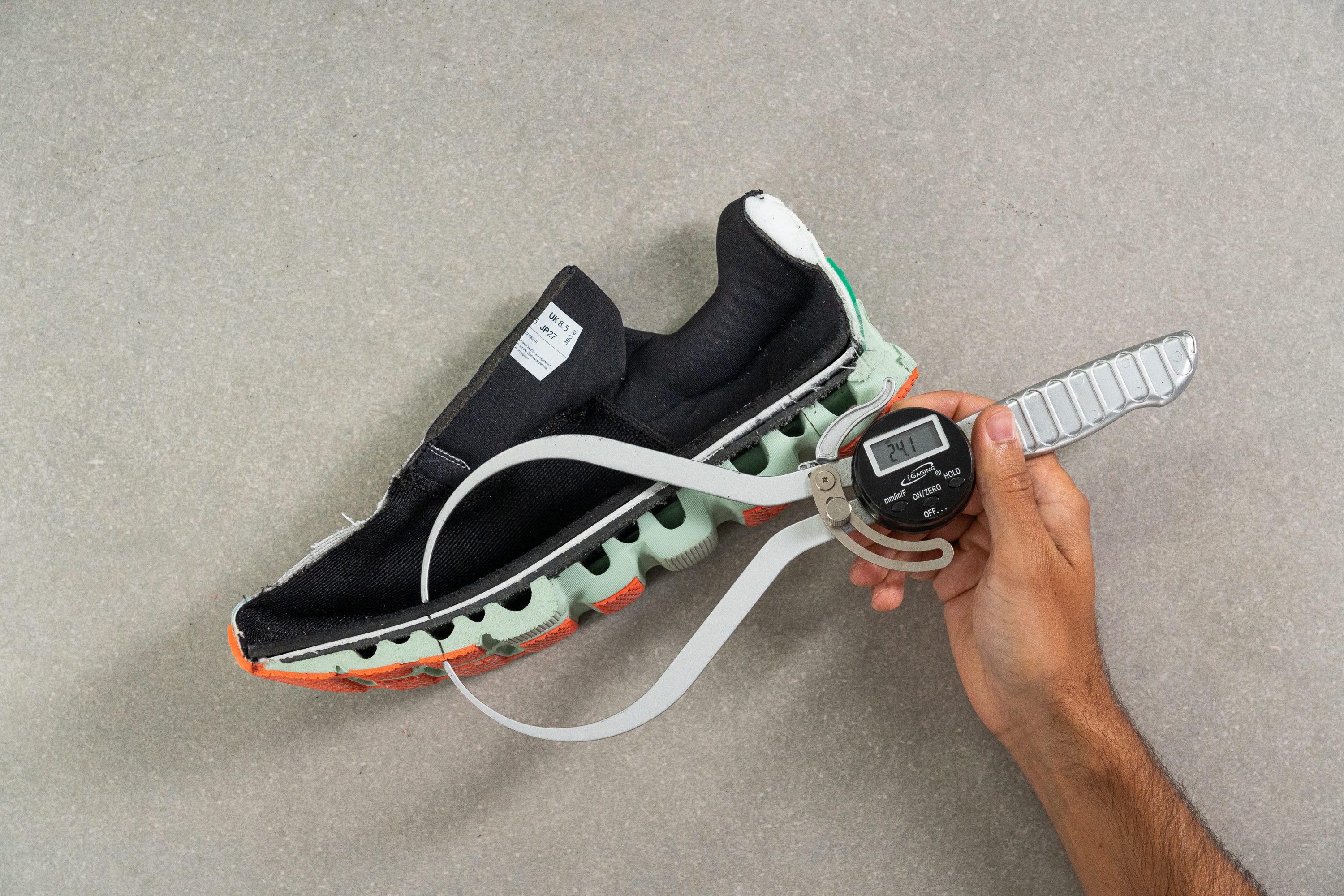
| Cloudstratus | 24.1 mm |
| Average | 26.2 mm |
Drop
This translates to a 9.7-mm heel-to-toe drop, which is great for heel strikers but may be excessive for those of us who are midfoot or forefoot strikers.
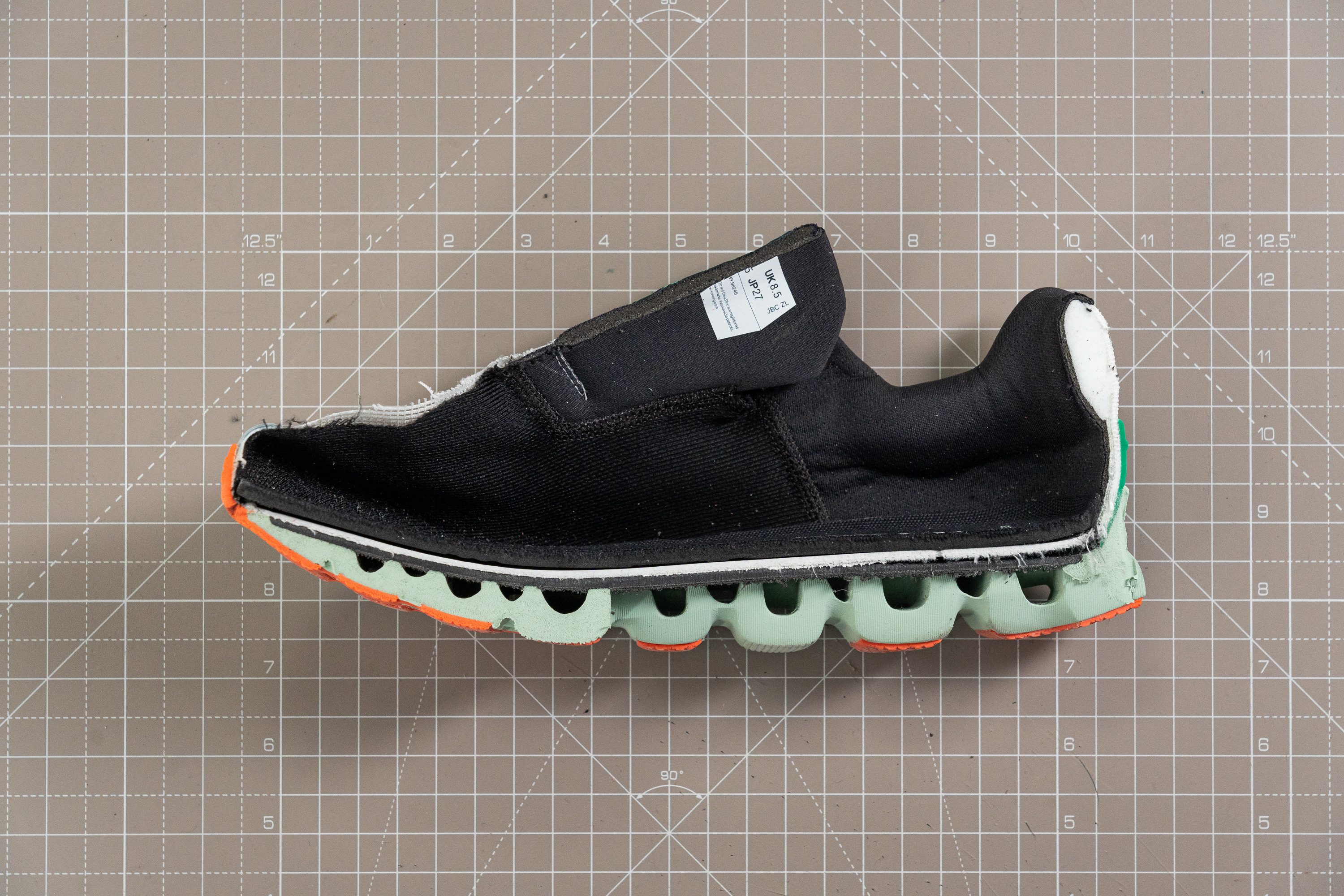
| Cloudstratus | 9.7 mm |
| Average | 8.6 mm |
Midsole softness
On shoes are known for their firmness, and the Cloudstratus doesn't buck the trend. We felt the firmness right off the bat, but we wanted to put a number on it.
At 29.9 HA, it's undoubtedly on the firm side, which might not sit well with those who love soft, squishy midsoles.
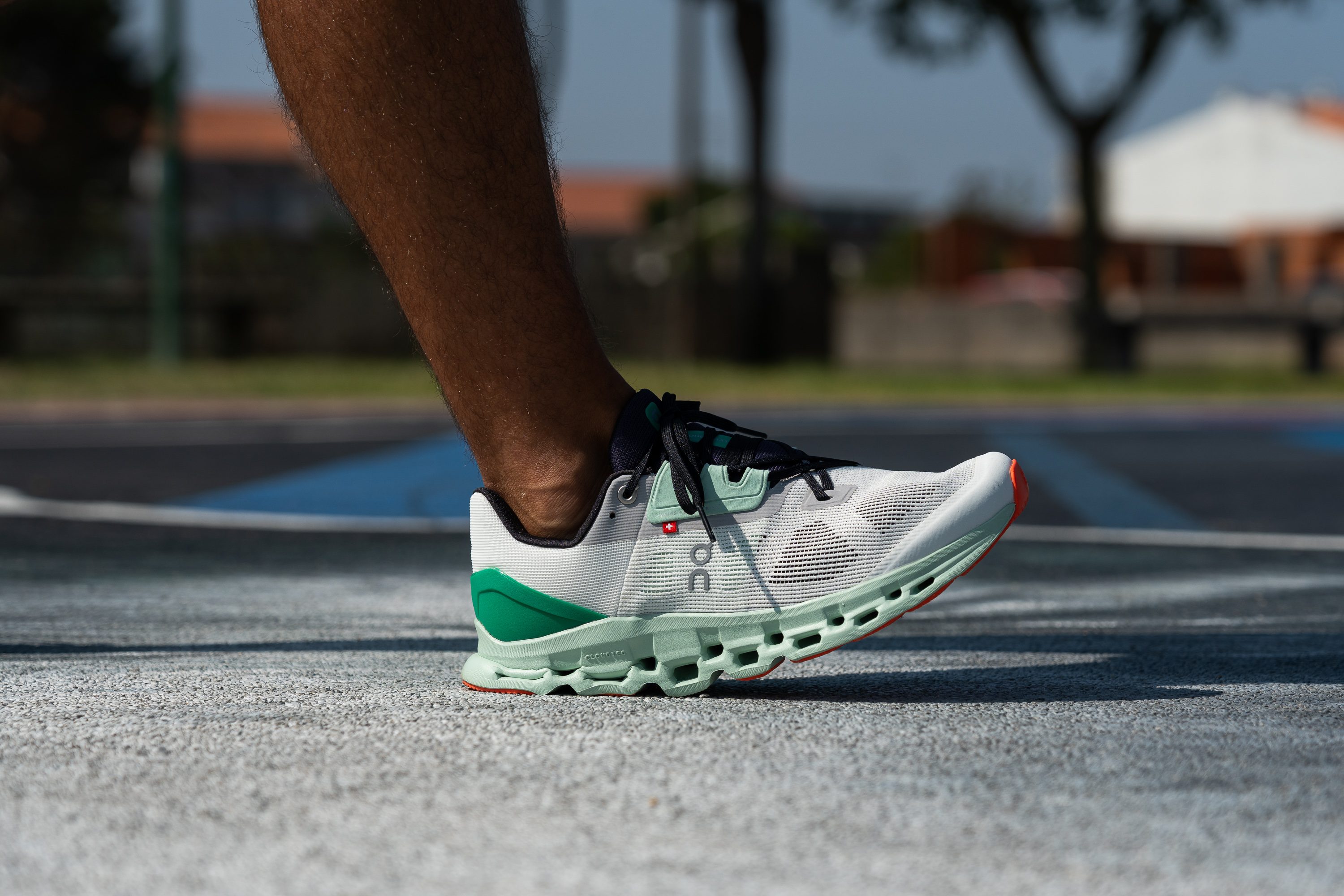
That said, the unique design of the CloudTec midsole does create a slightly softer feel underfoot than the numbers suggest.
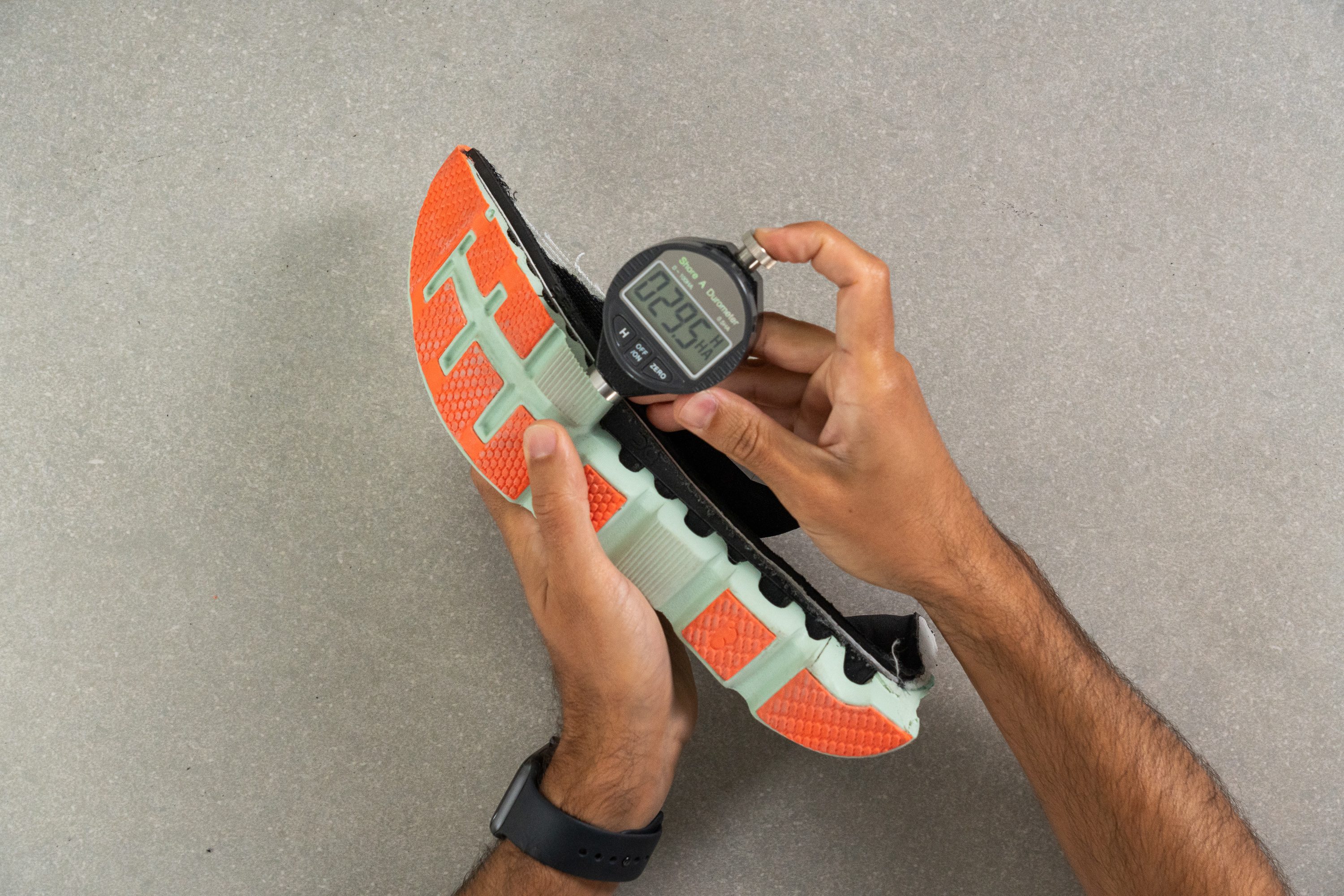
| Cloudstratus | 29.9 HA |
| Average | 20.4 HA |
Size and fit
Size
On Cloudstratus fits true to size (18 votes).
Width / Fit
In our lab, this is the first upper we've measured at exactly 100.0 mm. Not only is this measurement interesting, but it also indicates that we're dealing with a generously spacious shoe that can comfortably accommodate wide feet.
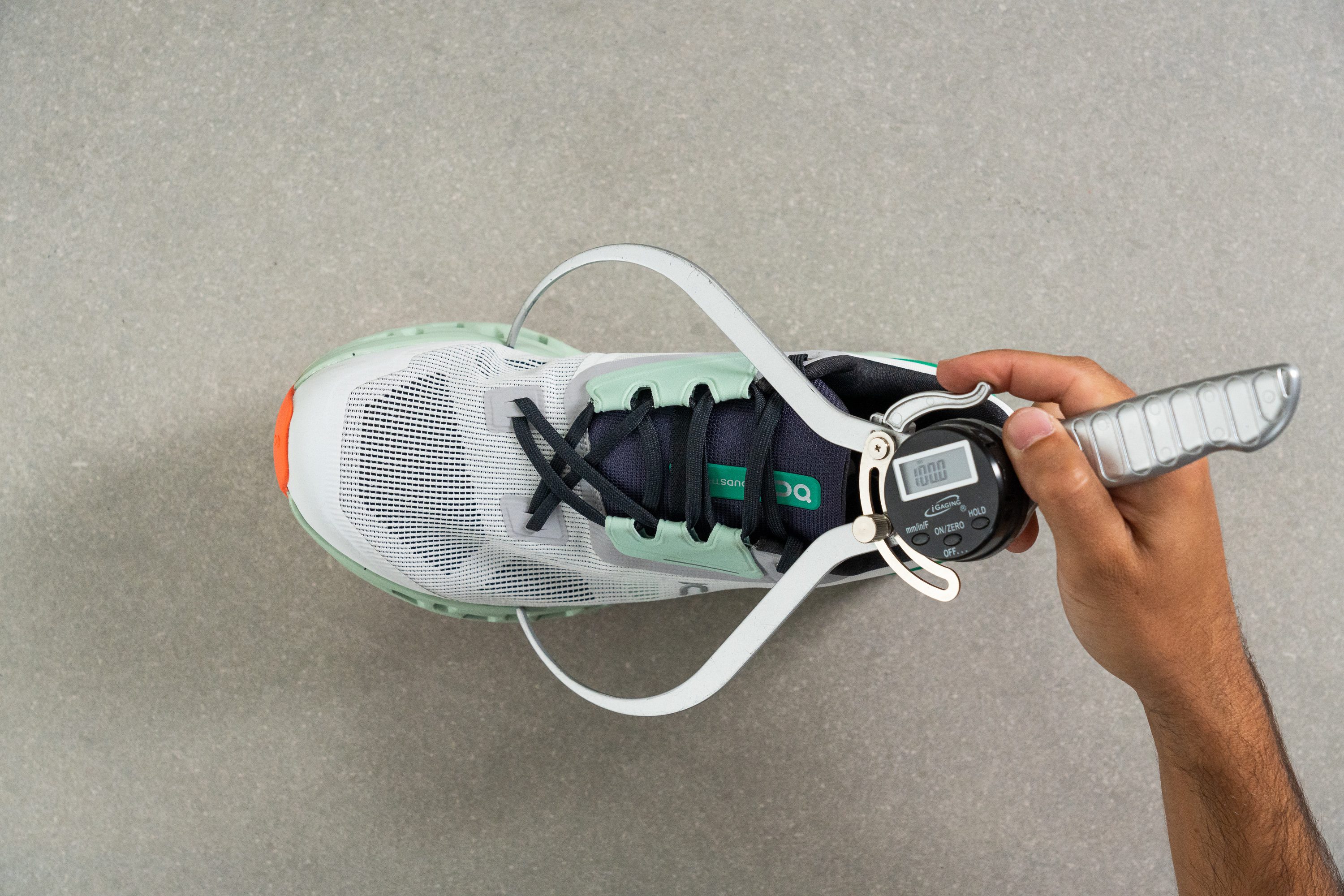
This test follows an older methodology, which is why you don't see recently tested shoes in the chart. Results from different methodologies can not be compared.
| Cloudstratus | 100.0 mm |
| Average | 98.5 mm |
Toebox width
The area for the toes is also notably wide. Thanks to the absence of a tapered toe cap, there's ample room for the toes to move freely.
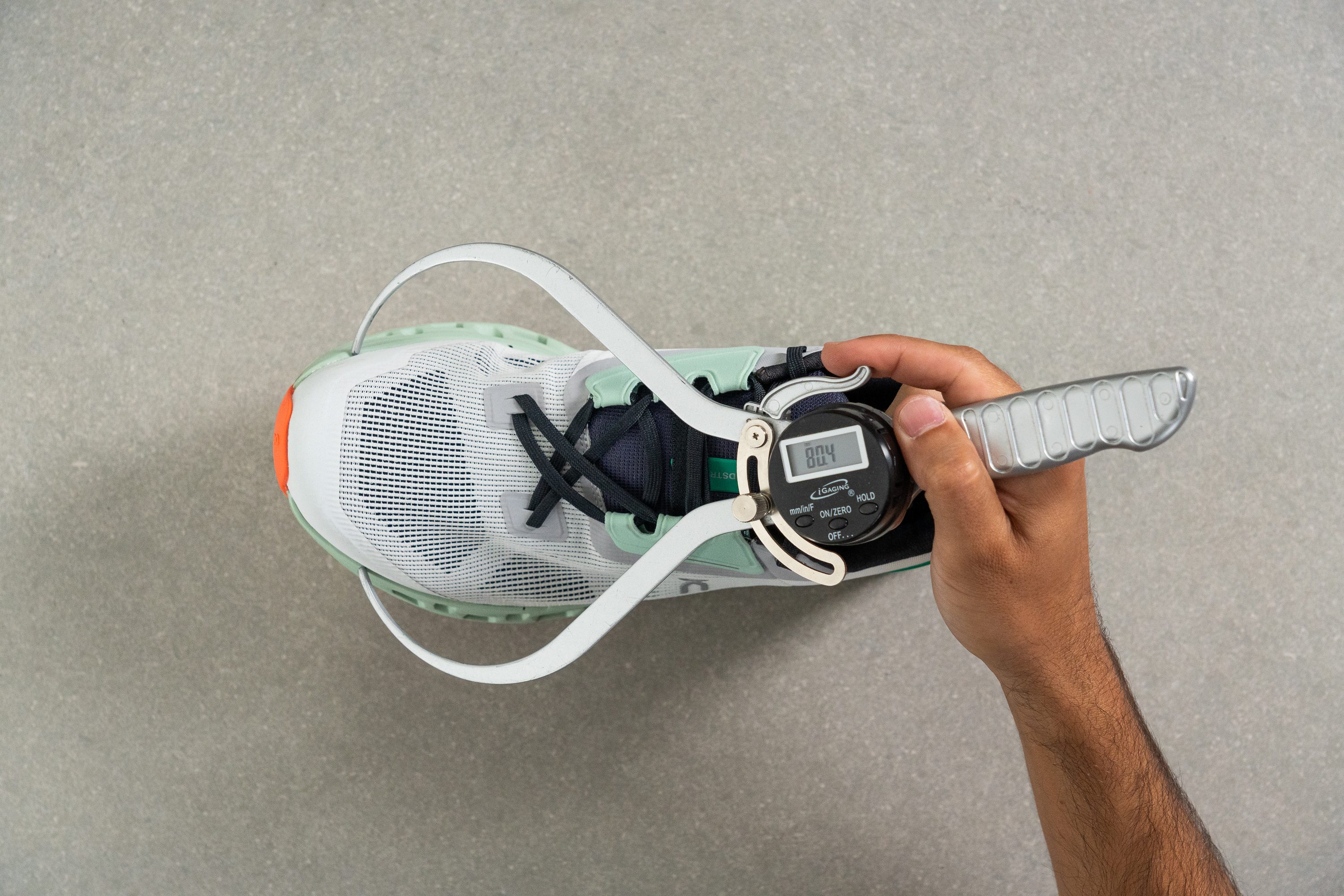
This test follows an older methodology, which is why you don't see recently tested shoes in the chart. Results from different methodologies can not be compared.
| Cloudstratus | 80.4 mm |
| Average | 78.4 mm |
Flexibility / Stiffness
We found the Cloudstratus extremely comfortable, whether we were walking, moving around in the lab, or even running. This led us to expect a low measurement in the 90-degree bend test.
Indeed, with a score of just 23.8N, it proved to be considerably more flexible than most shoes on the market.
This test follows an older methodology, which is why you don't see recently tested shoes in the chart. Results from different methodologies can not be compared.
| Cloudstratus | 23.8N |
| Average | 28.1N |
Stiffness in cold (%)
Yet, after a 20-minute stint in the freezer, we slipped them back on to find them noticeably stiffer.
When we repeated the same test, the result was a disheartening 37.2N, showing a significant increase in rigidity.
Indeed, this represents a significant 56.3% spike in rigidity, faring poorly when compared to most other shoes on the market. It's quite disappointing, especially for a shoe that costs £170.
| Cloudstratus | 56% |
| Average | 33% |
Weight
On is notorious for manufacturing heavy shoes, and this model is no exception. Weighing in at 10.35 oz (293g), it feels too bulky relative to its stack height.
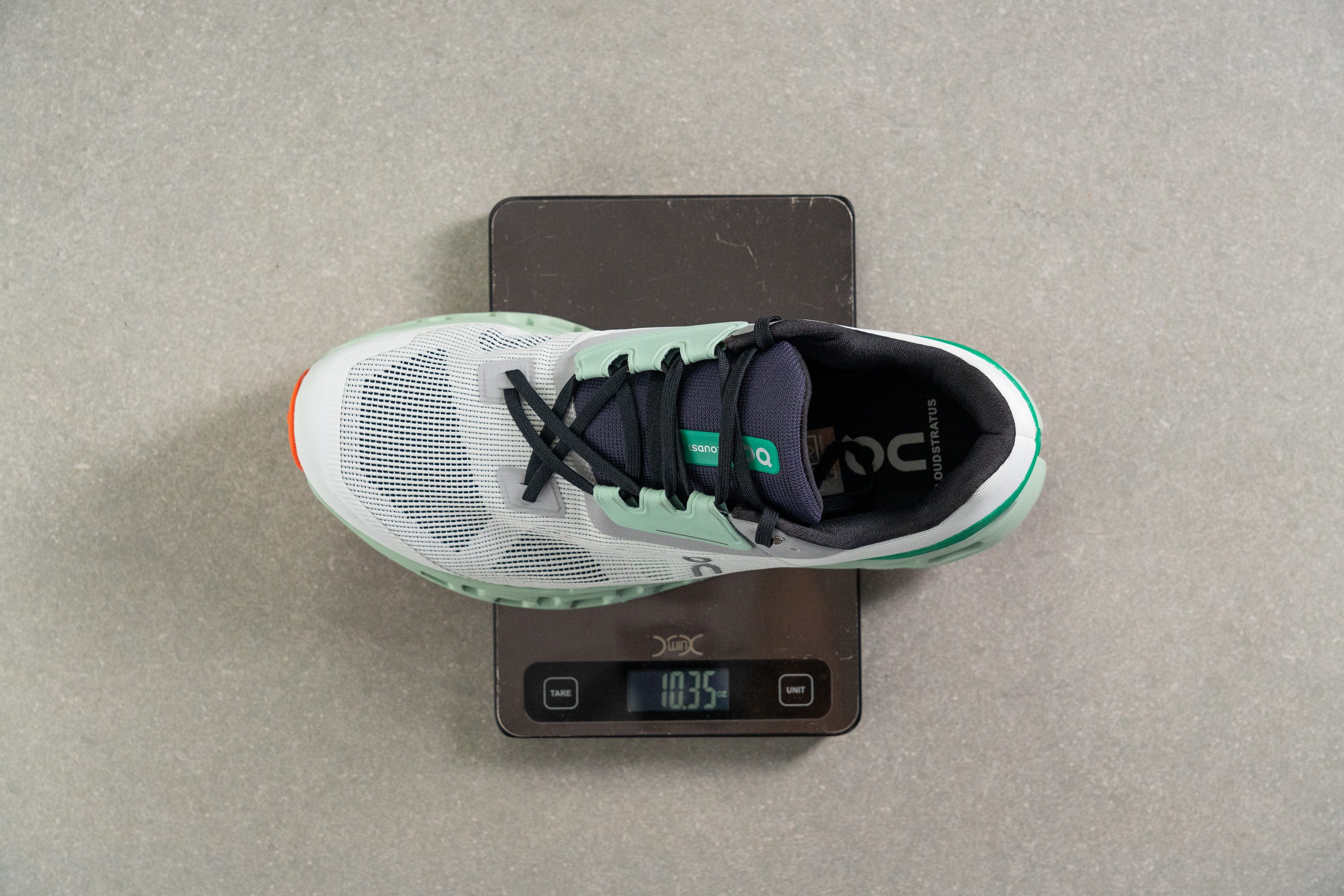
| Cloudstratus | 10.3 oz (293g) |
| Average | 9.3 oz (264g) |
Breathability
Upon first glance, the upper of the On Cloudstratus seems to promise superior breathability. However, this perception couldn't be further from the truth. Despite the numerous ventilation holes, our testing revealed disappointing breathability. We could only rate it a run-of-the-mill 3 out of 5.
It's all well and good to have abundant ventilation holes, but if another layer of fabric blocks airflow beneath them, their purpose is negated.
That's precisely what we found in this shoe. This obstruction also explains why we couldn't see any light passing through from the other side.
Further scrutiny under the microscope provided even more insight.

If not for the black fabric layer that On has incorporated underneath, the upper would have excelled in breathability.
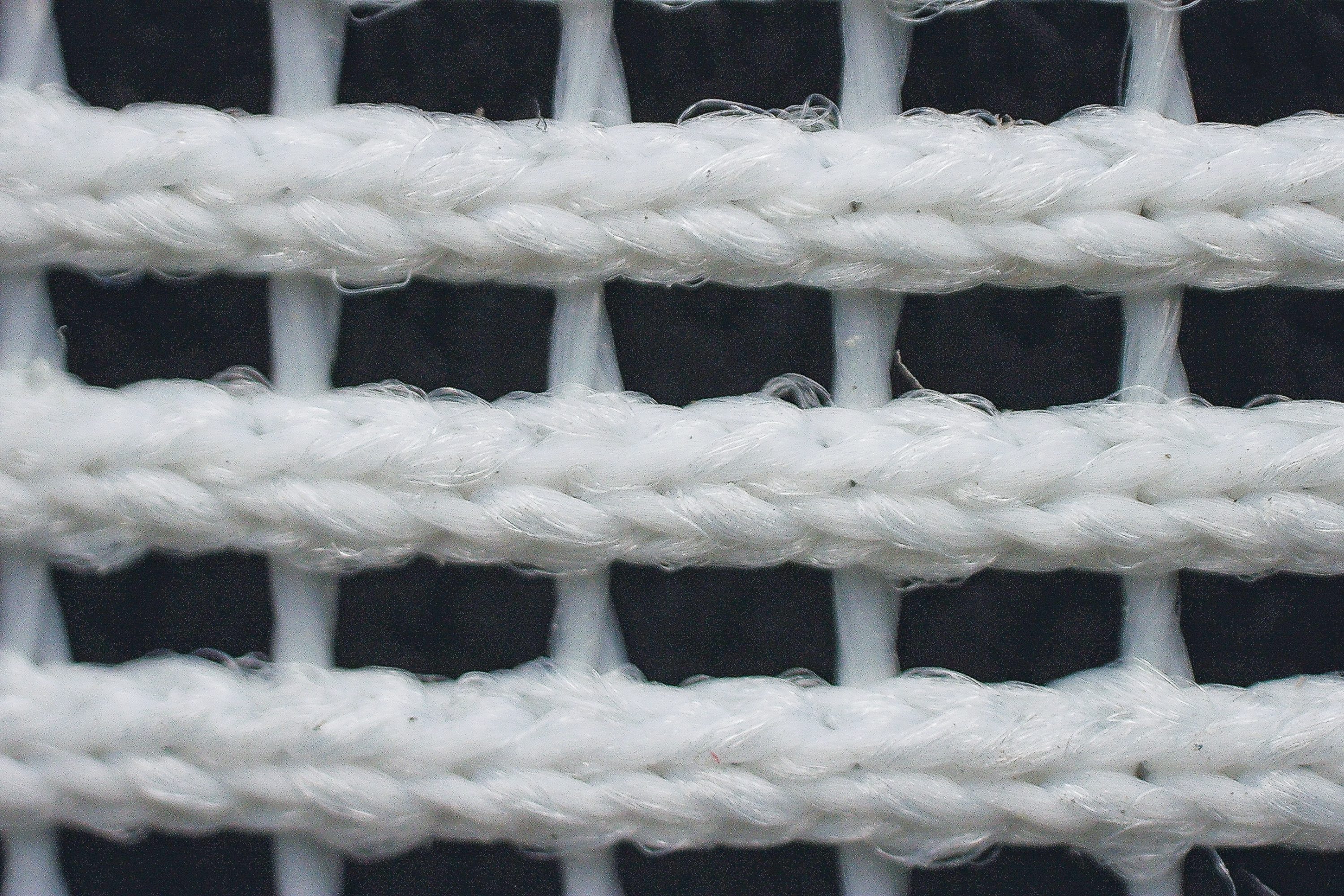
Undoubtedly, this layer is there for added comfort, a trade-off that On apparently deemed worthwhile. Yet, this choice sacrifices breathability for the sake of comfort.
| Cloudstratus | 3 |
| Average | 3.7 |
Stability
Lateral stability test
The Cloudstratus may not be a shoe purely built for stability, but it sure doesn't disappoint in this regard.
It feels stable with each stride. So, we confidently say it's a solid pick for overpronators.
Torsional rigidity
We gave twisting the shoe a shot, but it wasn't a walk in the park at all. It earned a 3 out of 5 in our rating.
This rigidity is the first sign that shows us why this shoe provides such a stable ride.
| Cloudstratus | 3 |
| Average | 3.5 |
Heel counter stiffness
The heel counter in the Cloudstratus contributes to its enhanced stability.
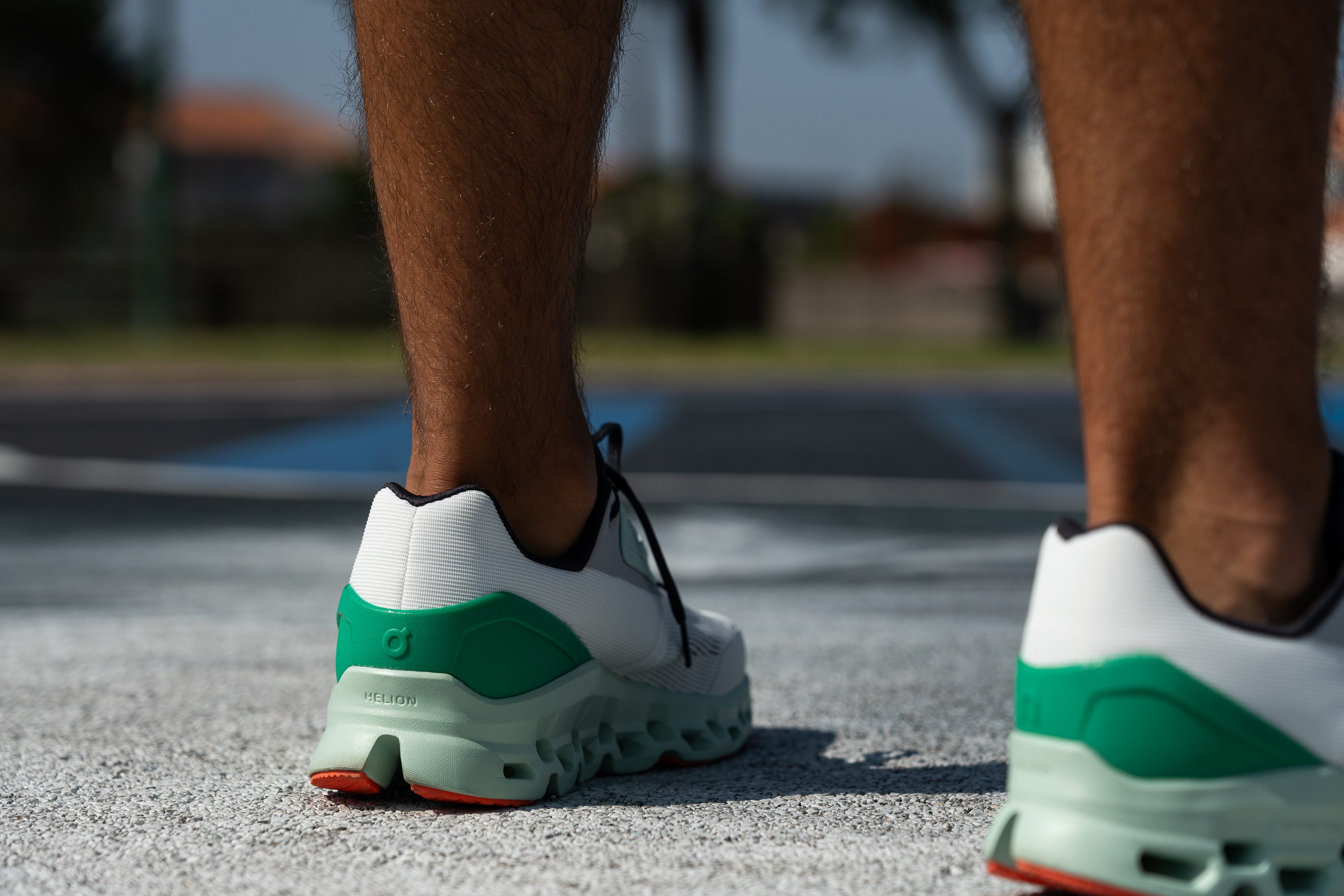
Though the plastic piece that surrounds the heel might give an impression of max stiffness, we've given it a rating of 3/5. That's pretty middle-of-the-road.
Rest assured, comfort isn't compromised. There's plenty of padding in the heel area, preventing any discomfort from rubbing or potential aches.
| Cloudstratus | 3 |
| Average | 2.9 |
Midsole width - forefoot
Although this model is not marketed by On as a stability-oriented shoe, we've previously mentioned that it indeed stands out as a remarkably stable choice.
One of the main contributing factors is the incredibly wide forefoot, which we've measured at a substantial 117.9 mm.
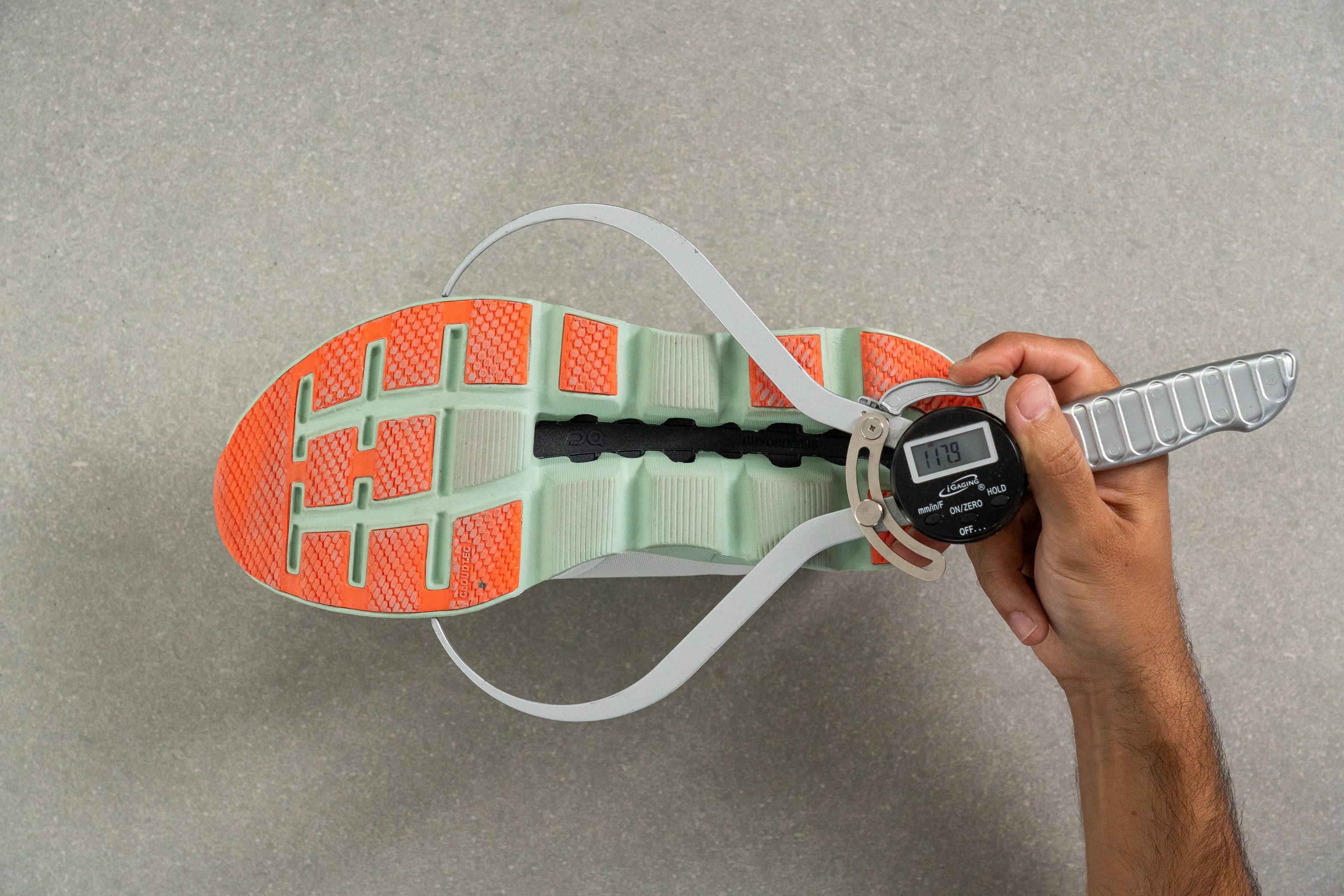
| Cloudstratus | 117.9 mm |
| Average | 114.4 mm |
Midsole width - heel
On the other hand, the heel doesn't match up with the same wide design, clocking in at only 89.3 mm.
It certainly provides stability for midfoot and forefoot strikers, but for heel strikers, it falls a bit short.
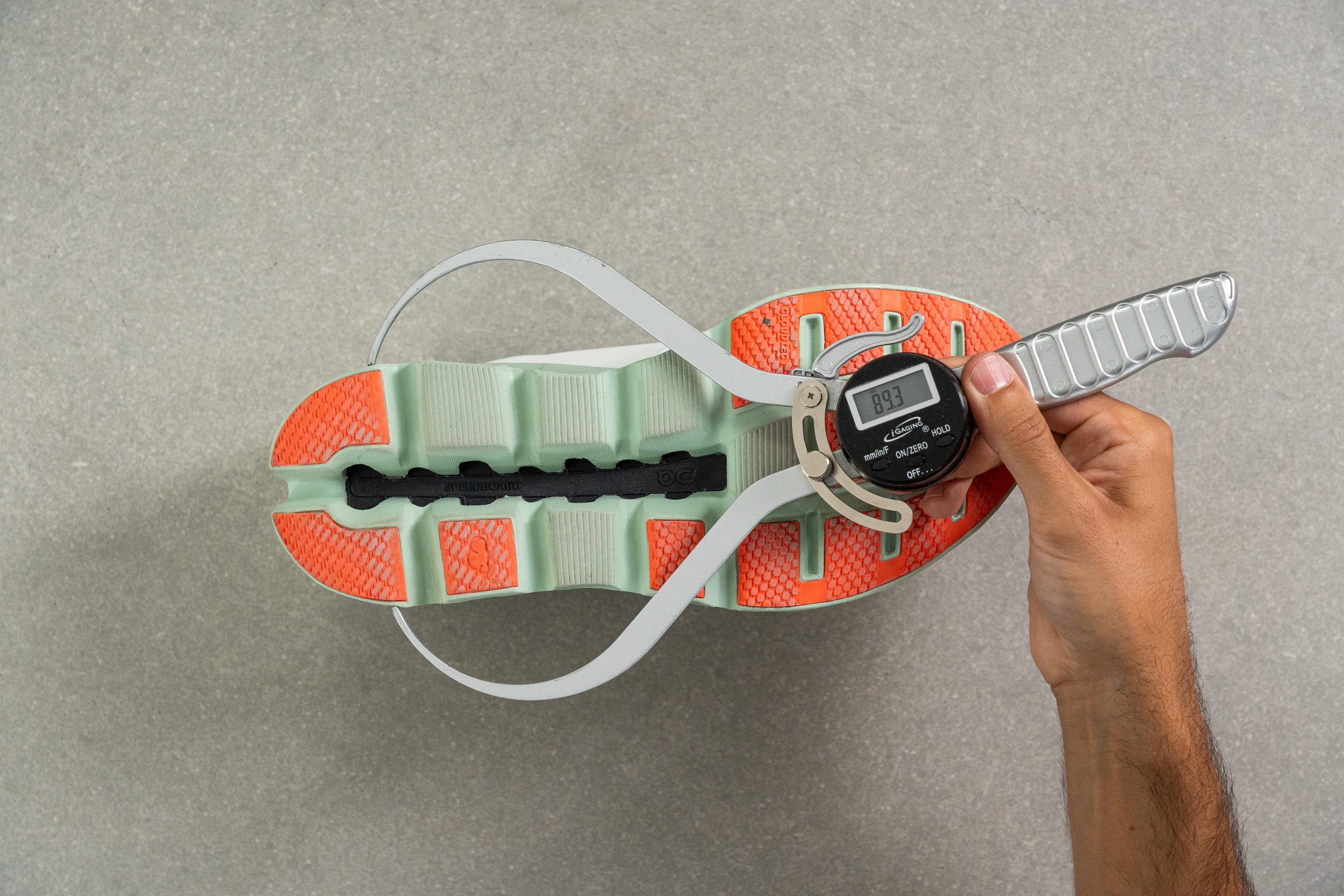
| Cloudstratus | 89.3 mm |
| Average | 90.7 mm |
Durability
Toebox durability
For those who value a long-lasting upper, we regret to bring disappointing news.
In our Dremel test, the Cloudstratus unfortunately didn't hold up well, scoring the lowest possible rating of 1 out of 5. Its performance clearly pales when compared to the Cloudswift 3.
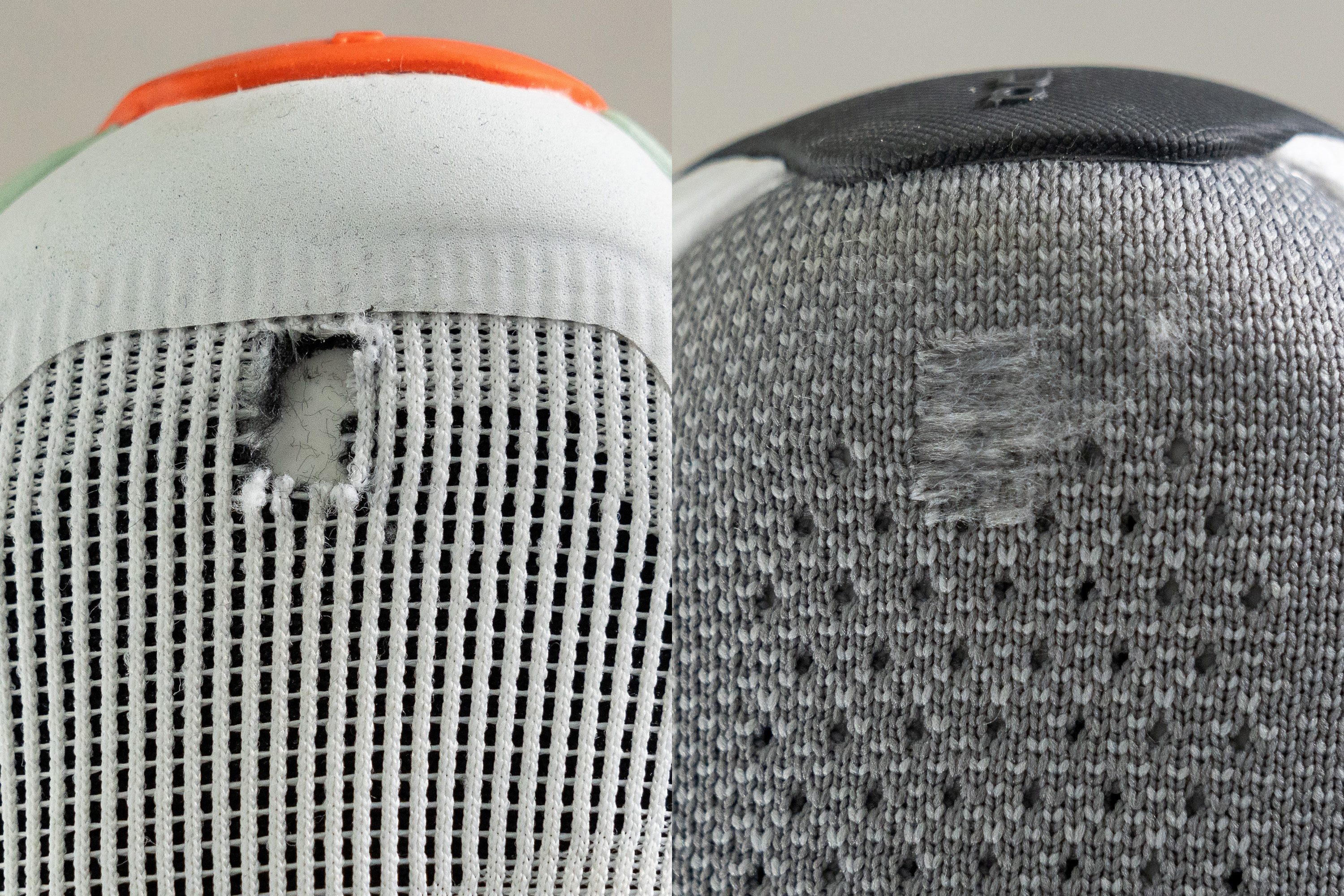
| Cloudstratus | 1 |
| Average | 2.6 |
Heel padding durability
As we turn our attention to the heel counter, we stumble upon a similar problem.
Despite its ample padding, it falls short in the durability department. Look at debris flying everywhere!
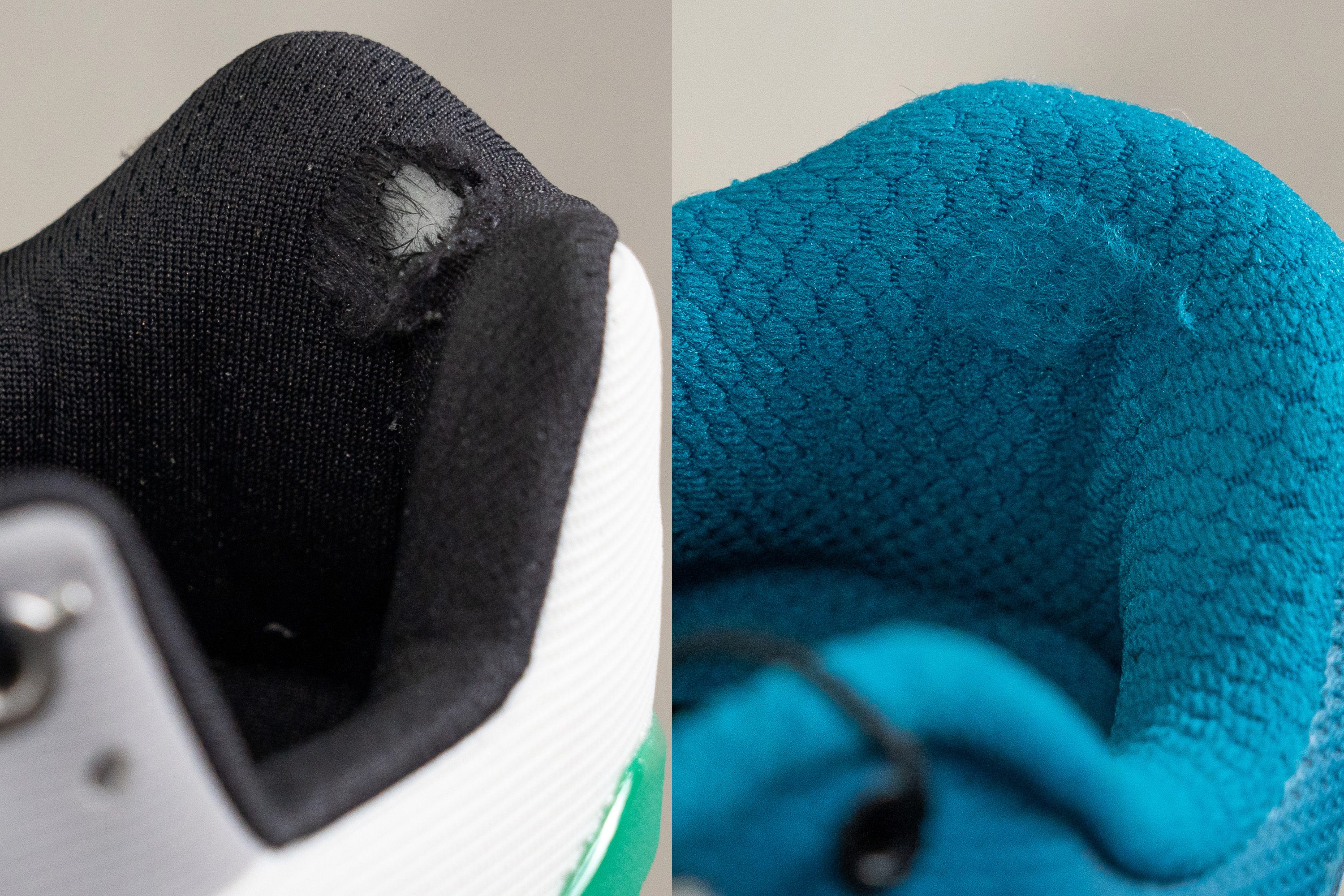
| Cloudstratus | 1 |
| Average | 3.4 |
Outsole hardness
The Cloudstratus comes with a hard rubber compound in its outsole, registering at 82.4 HC on our durometer.

This hard rubber does cut down on the shoe's grip somewhat, which we aren't thrilled about. But on the bright side, it should make for a more durable shoe.

| Cloudstratus | 82.4 HC |
| Average | 79.2 HC |
Outsole durability
However, we're not fans of making assumptions about what might happen. We much prefer putting things to the test to discover the reality. So, we once again used our Dremel in the lab to evaluate the outsole's durability.
We measured the indentation at 1.38 mm, which is higher than we'd expected for such hard rubber. While this isn't necessarily a deal-breaker when considering this shoe, it's evident that there's room for improvement in the outsole.
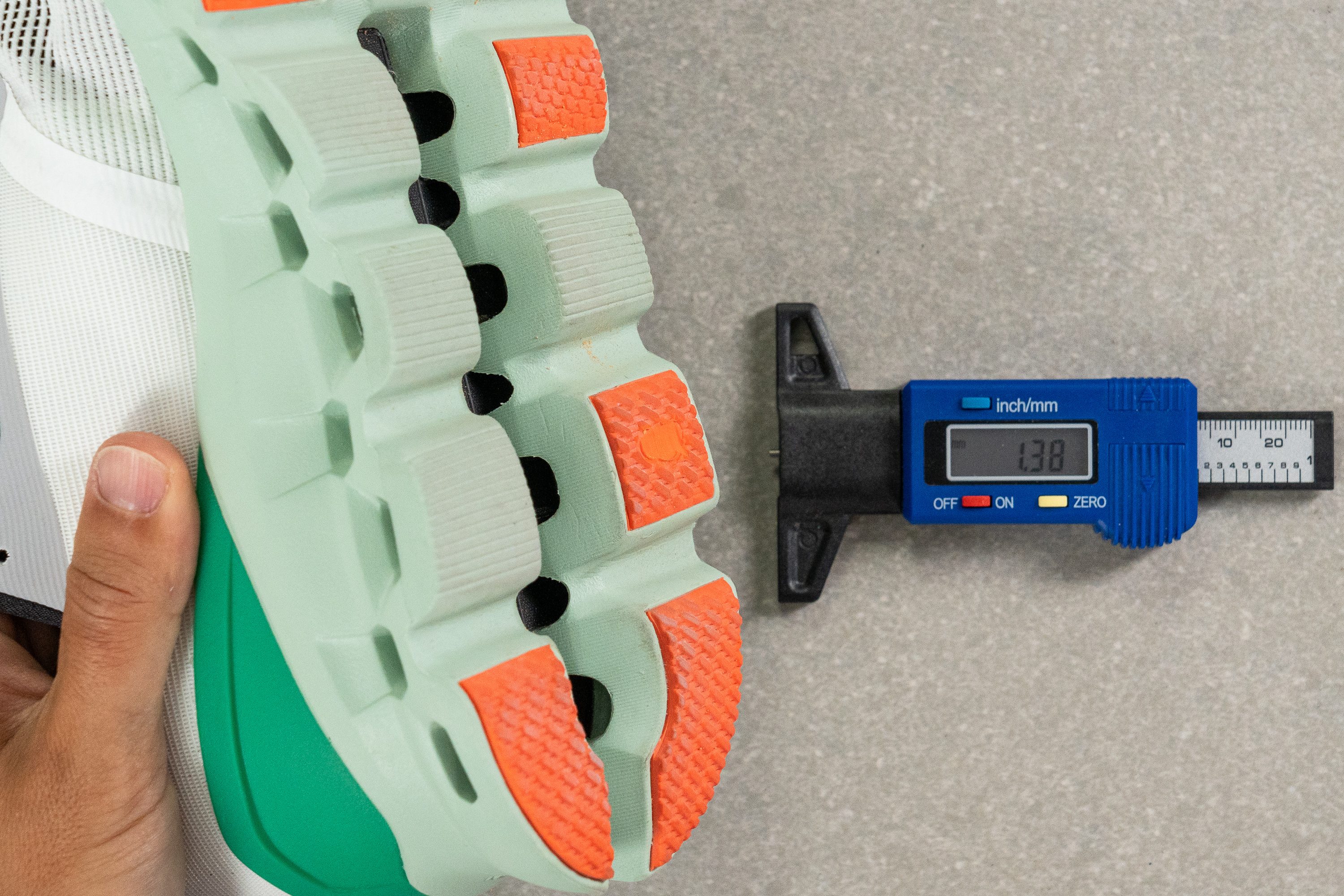
| Cloudstratus | 1.4 mm |
| Average | 1.1 mm |
Outsole thickness
Another aspect to keep in mind is that this model contains less rubber (2.8 mm) than the average running shoe. This, combined with the disappointing durability we observed, could result in the outsole wearing down prematurely.
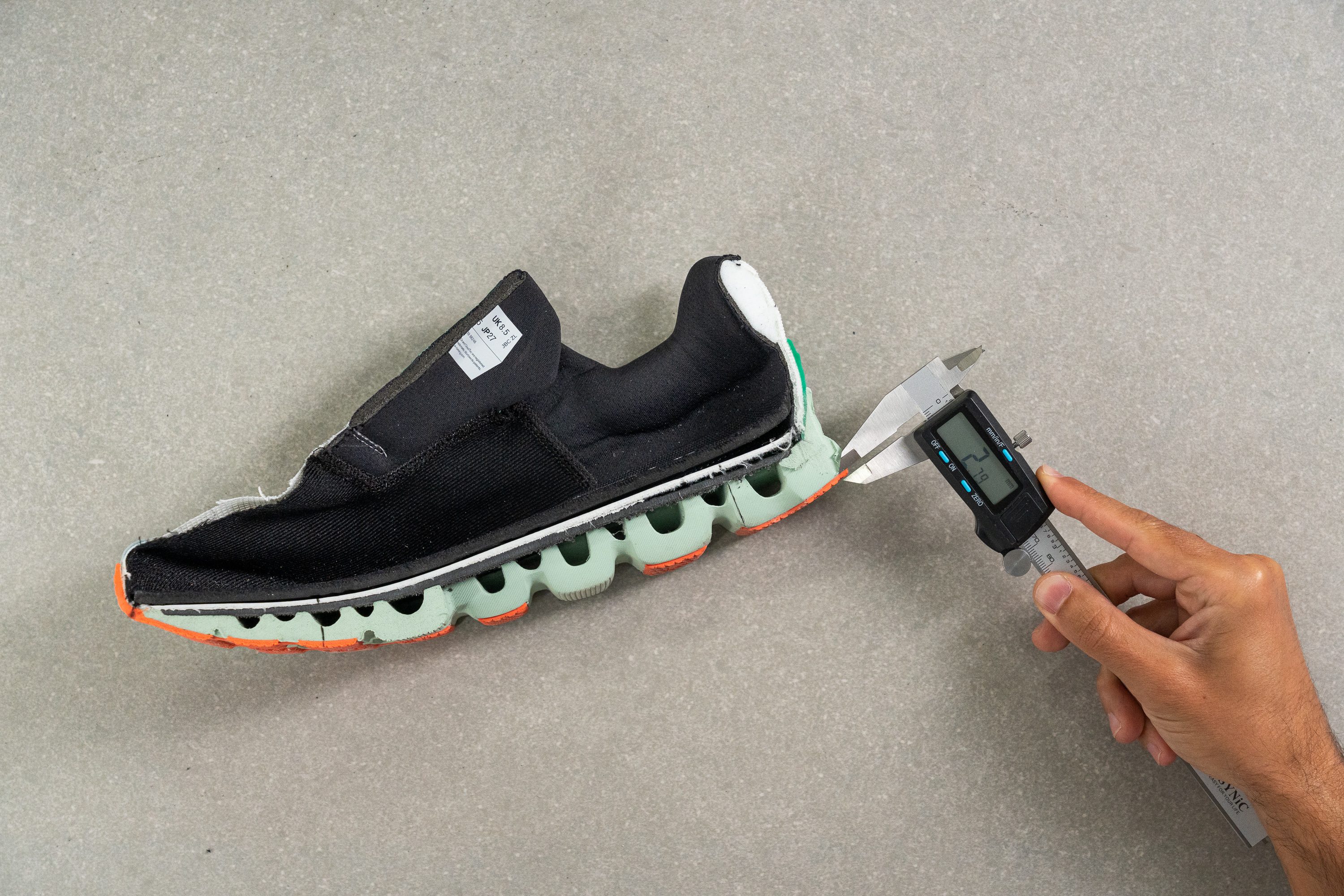
| Cloudstratus | 2.8 mm |
| Average | 3.2 mm |
Misc
Insole thickness
Have we mentioned this shoe's on the "follow-the-crowd" bandwagon? Here's more proof of it with its 4.6 mm insole. It's cushioned and won't give you any problem.
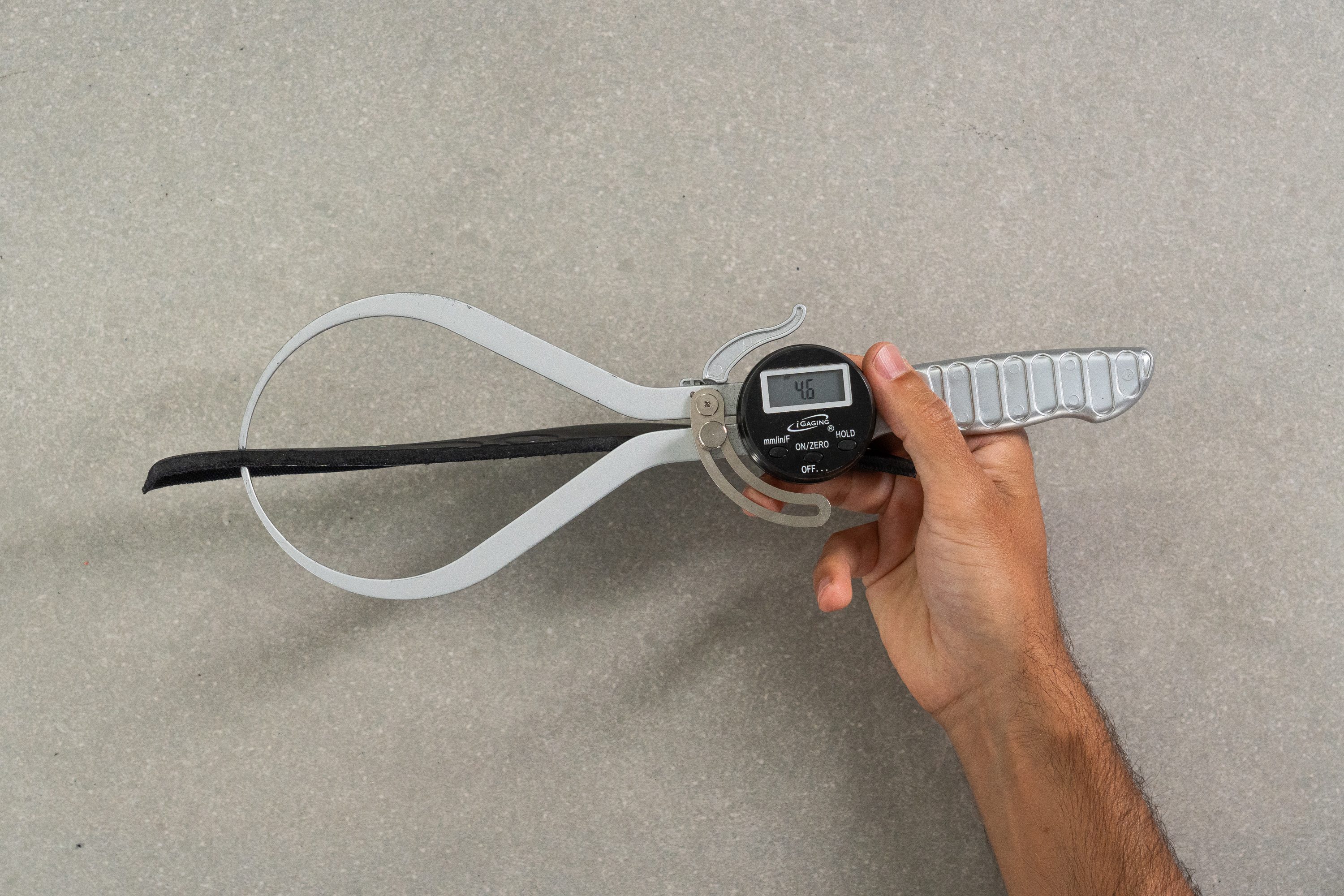
| Cloudstratus | 4.6 mm |
| Average | 4.5 mm |
Removable insole
One upside to this On shoe is its removable insole. Given that it's a spacious shoe, you won't face any issues when trying to fit in your own orthotics.

| Cloudstratus | Yes |
Midsole softness in cold (%)
After a 20-minute nap in the freezer, we picked up our durometer and were pleased to find a reading of 34.8 HA, which is close to our previous measurement.
It's evident that this shoe boasts remarkable resilience against chilly conditions! The slight 16.5% increase is thanks to the unique midsole composition.
Not just made from EVA, it also incorporates Olefin Block Co-polymers or OBC. This combination grants the midsole an impressive resistance to cold temperatures.

| Cloudstratus | 17% |
| Average | 24% |
Reflective elements
While it might not be the most reflective On shoe available—take a look at the Cloud Waterproof—it's great to see that the logo catches light. And this is a nice touch considering many shoes today completely overlook the inclusion of any reflective elements at all.

| Cloudstratus | Yes |
Tongue padding
Clearly, On prioritises comfort over weight, and the Cloudstratus is a testament to that. With a 7.8 mm thick tongue, it's definitely a well-padded one.
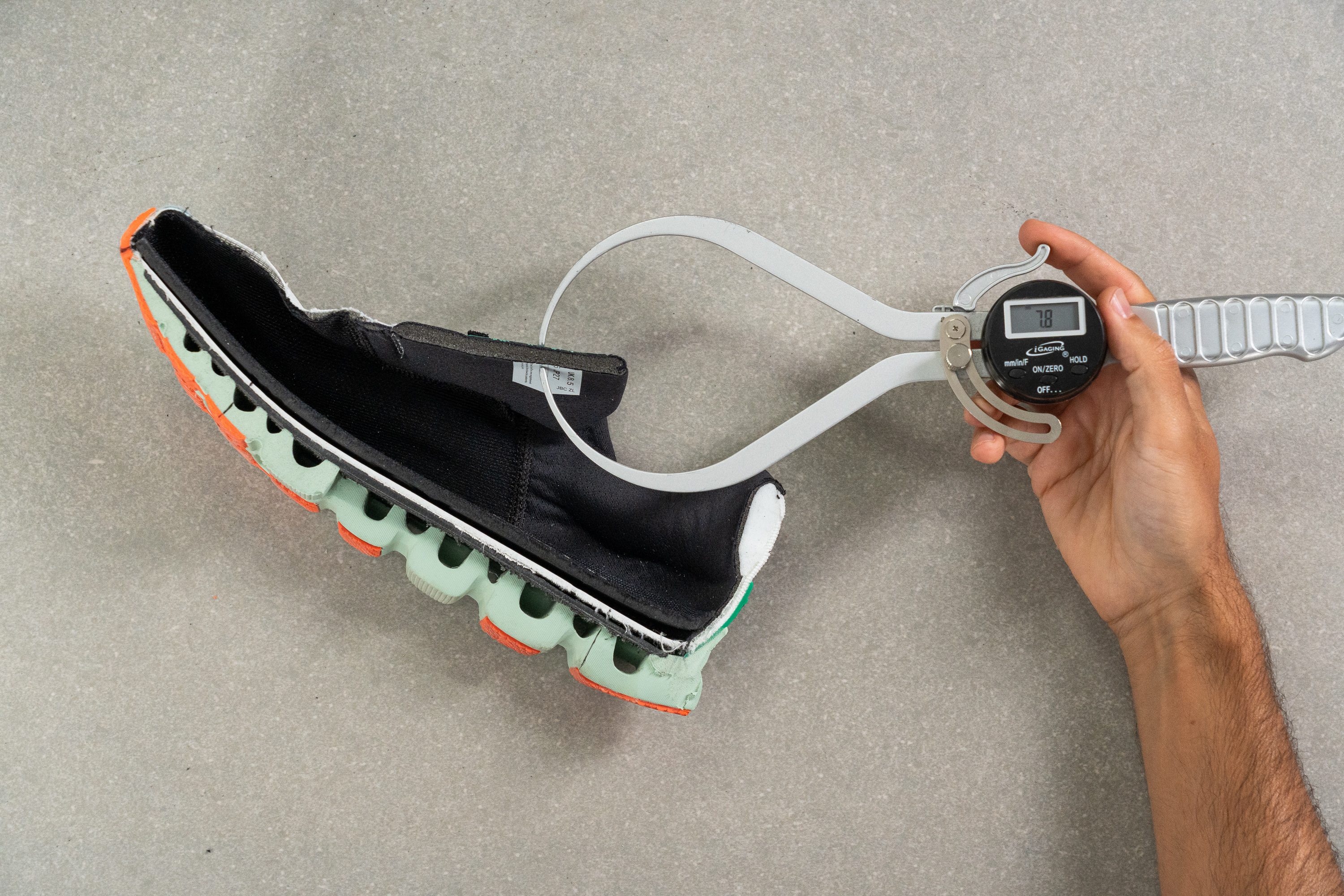
| Cloudstratus | 7.8 mm |
| Average | 5.8 mm |
Tongue: gusset type
As we frequently observe in On Cloud shoes, a bootie-style tongue is incorporated, providing a secure and snug fit.
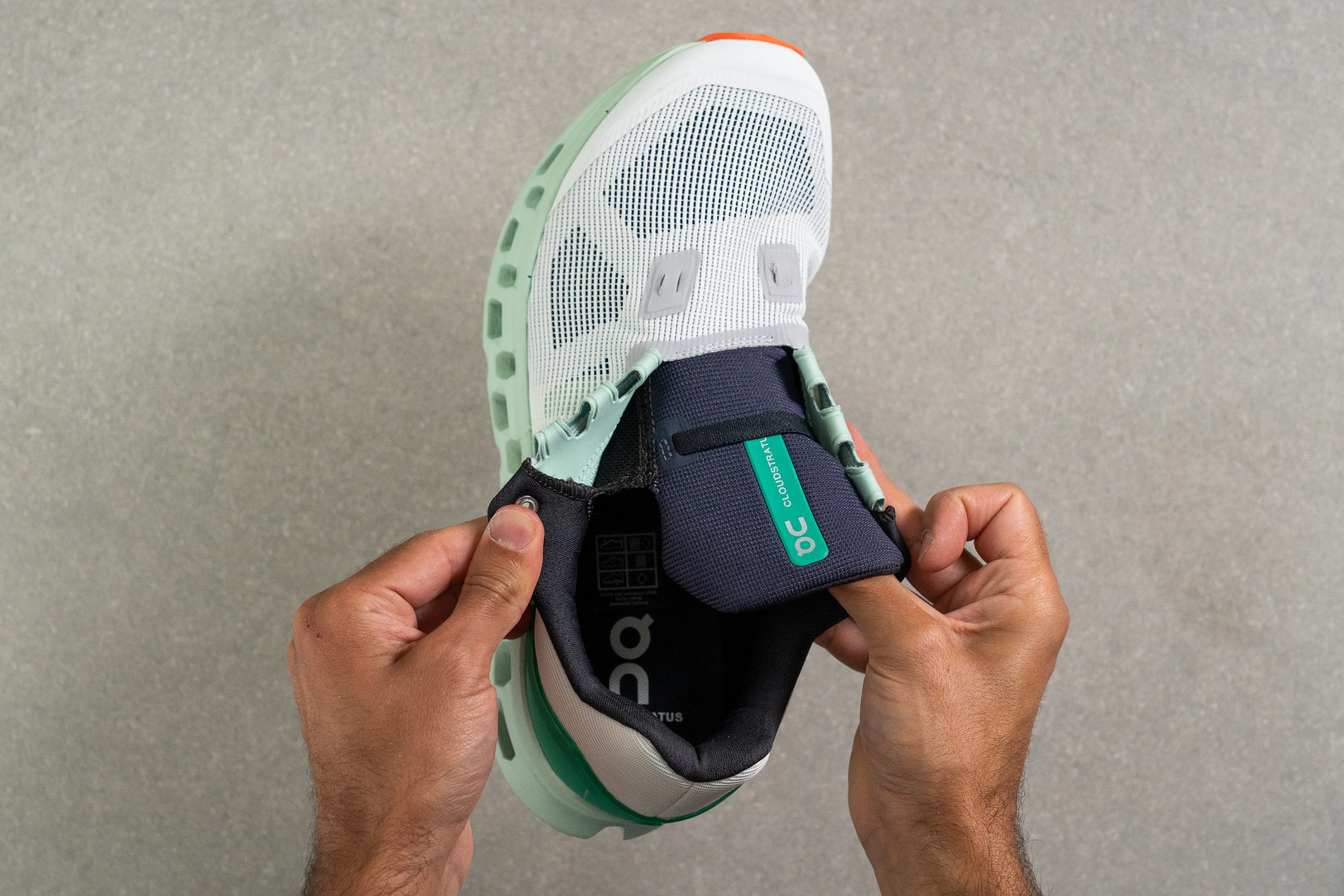
| Cloudstratus | Bootie |

